Held every ten years since 1952 to select the 100 greatest films of all time, Sight and Sound film magazine has asked contemporary critics and directors to select ten films of their choice. In previous polls and for a long time Orson Welles’ Citizen Kane between 1962 and 2002 was regarded the greatest film of all time. In the last poll held in 2012 Alfred Hitchcock’s Vertigo for the first time toppled Citizen Kane. The question remains now who will reign supreme in 2022? I will update readers once the results are in later this year, but for now if I was eligible to vote in their forthcoming once-a-decade poll, my choices are listed here below, in alphabetical order. My criteria is simple enough. These are ten films that have had the biggest impact on my own view of cinema. Enjoy!

Casablanca (1942).
On its 80th anniversary this year it’s worth remembering as Humphrey Bogart said as Rick, “The problems of three little people don’t amount to a hill of beans in this crazy world.” Oh but they do Rick, that’s why cinephiles like myself love Casablanca. Over the years since its release in 1942, we have all come to adore this timeless masterpiece and we will still be talking about in fifty years from now. If that all sounds too good to be true, why is it that Casablanca is so easily remembered for its treasure trove of scenes and quotes? Because it has managed to weave itself into the fabric of our culture with such great affection.
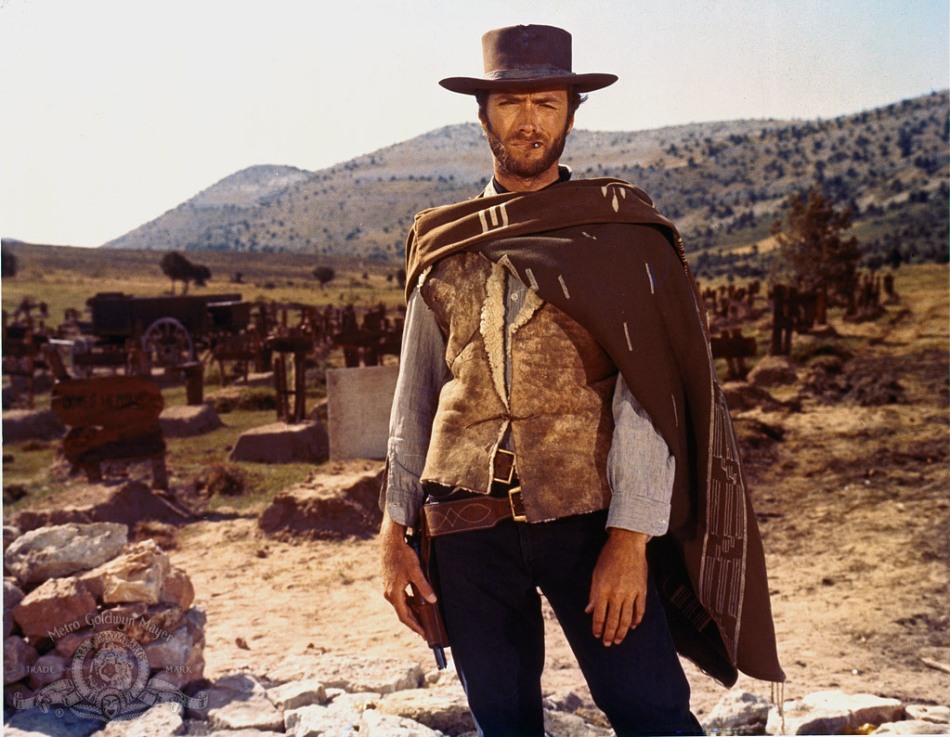
The Good, The Bad and The Ugly (1966).
Long before Quentin Tarantino publicly once said that Sergio Leone’s The Good, The Bad, and The Ugly (1966) was “the greatest achievement in the history of cinema”, I was in its corner rooting for it to anyone who would listen. I have just seen it again, after being inspired by Sad Hill Unearthed (2017), a documentary about a group of fans who decide to restore the cemetery site in Spain where the final showdown in the film occurs. While others sing John Ford’s praises that The Searchers (1956) is arguably the best western ever made, I believe Leone’s brash, cocky and epic masterpiece exceeds it. Roger Ebert once said Leone’s film is “an exercise in style”. That said, no one has ever come close to emulating it, except maybe and funny enough Sergio Leone with his follow up revisionist western Once Upon a Time in the West (1968).

It Happened One Night (1934).
A list without Frank Capra is an injustice to the great director who made films like Mr. Smith Goes to Washington (1939), It’s a Wonderful Life (1946) and Mr. Deeds Goes to Town (1936). It’s fair to say these are all incredible films but his crowning achievement was the romantic screwball comedy It Happened One Night which won 5 oscars (picture, director, actor, actress, screenplay). Films like It Happened One Night were all the rage in the early 30s and 40s. It tells most of its madcap story on the road with Claudette Colbert and Clark Gable forced to tolerate each other. All in all, I adore this film because it is fun and sexy with Colbert as a runaway heiress and Gable as a single-minded reporter who smells a front page story. Two famous scenes always come to mind when I think back to its most memorable moments. The first which sees Colbert hitchhiking by lifting her skirt, and the second which finds our two protagonists holed up in a cabin with nothing but the ‘Walls of Jericho’ in between them.

Laura (1944).
Where do I begin in my appreciation of Otto Pereminger’s Laura? Let’s start with Gene Tierney. Maybe more so than Lauren Bacall, Tierney was my first old Hollywood on-screen crush. My own obsession with Tierney though didn’t begin with her role in Laura. In fact I first saw her in The Ghost and Mrs. Muir (1947) and instantly became mesmerised my her beauty and talent. (Later I would discover more about her tragic life.) Eventually when I did come around to seeing Tierney as Laura Hunt, I soon realised this was a role of a lifetime, even though Tierney at the time didn’t think much of it. For the most part the film’s story is told in flashback. Its success lies in the fact that it’s both a murder mystery and a tragic story of infatuation and love. Standouts include Dana Andrews as Detective Mark McPherson who leads the charge in investigating the death of Laura. Moreover the success of Laura rests in composer David Raksin haunting film score and Joe Lashelle’s visually stylistic Oscar-winning cinematography.

Lawrence of Arabia (1962).
It was nominated for 10 Academy Awards in 1963, in which it eventually won 7, including Best Picture and Best Director. Its huge canvas is so striking, its story so completely enthralling that I dare you not to be impressed by David Lean’s masterpiece. “It was a miracle”, director Steven Spielberg once said, devouring every single frame as an inspiration to his development as a filmmakers. Spielberg especially loved the transition of scenes. One scene, in particular, caught his eye and has managed to stay with him his whole life. It involves an elegant shot of actor Peter O’Toole as Lawrence blowing out a match, which cuts straight to a gorgeous Arabian sunrise with a sweeping musical score to boot. I dare say it rivals Kubrick’s opening sequence with the sun rising over the Earth and the moon in 2001: A Space Odyssey. Everything about Lawrence of Arabia is seemingly perfect and even at over three and half hours long it never feels like it drags. Still to this day I feel like Lawrence of Arabia is a high point of filmmaking. Everything that has come after it owes some sort of debt to it.
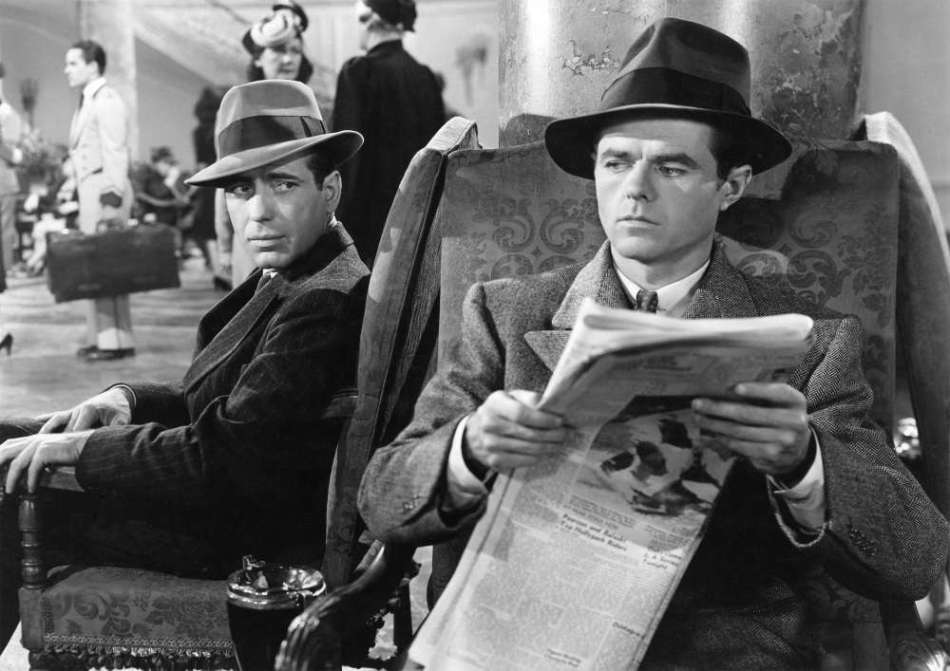
The Maltese Falcon (1941).
I made up my mind to have at least one film noir on this list but eventually decided upon two. I couldn’t live with myself if I didn’t include John Huston’s The Maltese Falcon on this list. Part of my obsession with it lies with its leading man Humphrey Bogart. Short of writing something new, in my feature article ‘Humphrey Bogart: The Man, The Legend and The Falcon’, I looked at Bogart’s long apprenticeship, hard work and failures as an actor before a black bird made him a star. But if I am to say just a few more words here in praise of The Maltese Falcon, it is that it lay the groundwork for many of the stylistic tropes associated with noir such as key low-lighting, odd camera angles, a McGuffin, a femme fatale, a sap, and a hardboiled leading man.

Platoon (1986).
When I first saw the movie poster for Platoon in 1986, with Sgt. Elias’ arms raised in the air, I was gobsmacked by its graphic nature but at the same time I was also somewhat intrigued. Was this a scene from the film, I thought. Even it’s tagline… ‘The first casualty of war is innocence’ aroused my curiosity, which didn’t make much sense to my teenage self at the time. Of course, it was only after I had seen the film that I was able to understand its underlining message. In short, inspired by director Oliver Stone’s own war experience in Vietnam, the film follows nineteen-year-old infantry grunt, Chris Taylor (played by Charlie Sheen), who volunteered for military service because he believes it is his patriotic duty. But soon idealism gives way to horror, as he witnesses one bloody incident after another, with life shattering consequences.
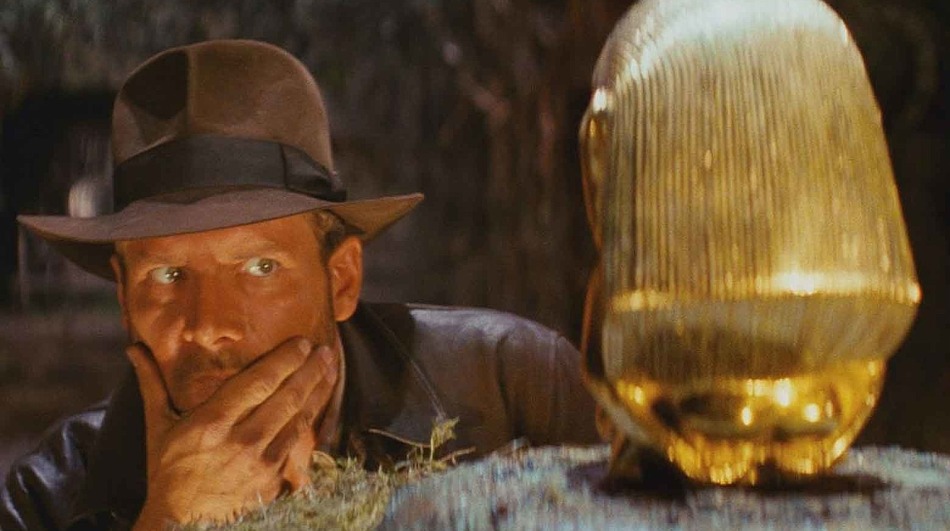
Raiders of the Lost Ark (1981).
I honestly cannot tell you how often I have watched this film. Among the most memorable scenes it is always worth talking about Harrison Ford as Indiana Jones as he attempts to procure an ancient golden idol before eventually realising he has triggered a trap. Even better as the temple begins to collapse, he soon realises he is in even more trouble when a giant boulder decides to chase him down. This opening sequence is of course just a taste of the wall-to-wall action scenes mapped out and executed by Steven Speilberg. Inadvertently Raiders of the Lost Ark became the new standard of action adventure films with a swashbuckling hero in a fedora hat with a nose for adventure and trouble when it was released back in 1981. Since then, there have been an array of films such as Lara Croft: Tomb Raider (2001) or The Mummy (1999) that have tried and failed to emulate its winning formula. There is no doubt in my mind that Raiders of the Lost Ark remains a classic because it fills in a void in our lives especially for those of us who still thirst for adventure or escapism.

Rear Window (1954).
Often simply known as the ‘Master of Suspense’ – Alfred Hitchcock stands as one of the most important and influential directors that ever lived. At the end of his illustrious career, Alfred Hitchcock, had directed over 50 feature films. To pick out just one Hitchcock film as his greatest is problematic at best. It often depends upon the mood you are in. Whether you are looking for an espionage thriller, a twisted love story or a mystery murder, anyone of Hitchcock’s most celebrated films like Notorious, Rebecca, Shadow of a Doubt, Psycho and North By Northwest seem to fit the bill as the perfect Hitchcock film. Then again what about Sight and Sound’s reigning champion Vertigo? There are enough critics and filmmakers who believe Hitchcock’s psychological mystery Vertigo is the greatest film of all time and I guess by default makes it his best. But just maybe, the sense of mystery, suspense and voyeuristic pleasure of Rear Window is proof of Hitchcock’s dark genius.
There is something about Rear Window that keeps me coming back to it over and over. Like a peeping tom I’ve studied every single frame wondering if I’ve missed all of Hitchcock’s visual cues as the mystery unfolds. I even still gasped in horror at the sight of news photographer L. B. Jeff Jefferies (James Stewart) and his socialite girlfriend, Lisa Fremont (Grace Kelly) up to no good, repeatedly putting themselves in harms way all for the sake of proving a murder. Moreover the complex love story that permeates our screen between Jeff and Lisa is just as interesting as the murder mystery. These few points are just some of the reasons why Rear Window is my favourite Hitchcock and arguably one of the greatest films of all time.
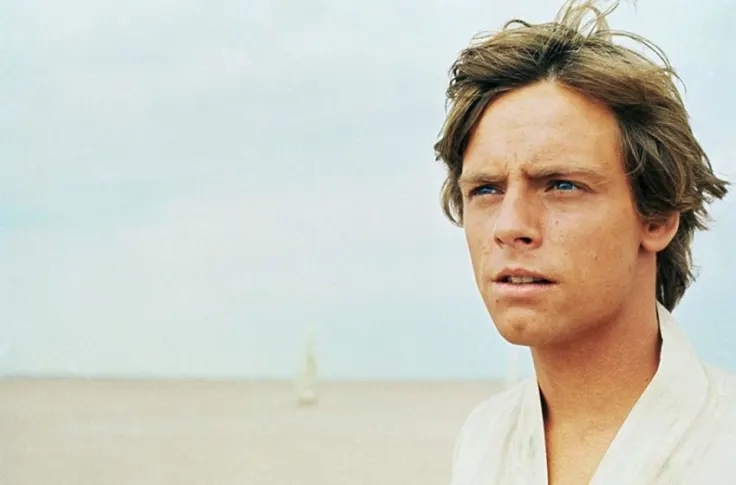
Star Wars (1977).
It’s fair to say the classic hero’s journey story has been repeated over and over in movie history, but what George Lucas did against the backdrop of a galaxy far, far away captured the public’s attention to a degree that it even surprised Lucas who created it. I could honestly go on and on about Star Wars. But how about I leave you instead with something I wrote years ago in a short tribute to George Lucas on a site called Yesterday Unhinged. This is what I said: “Most people say he sold out as a film-maker, but I don’t care! He is my God! He introduced me to one of the most influential ‘space sagas’ in motion picture history. Star Wars’ impact and influence around the world in particular, popular culture, is immense. I have even brainwashed my own son Luke, no just kidding his name is not Luke, its Han, to love Star Wars and Indiana Jones.”
Anyway, as you might have gathered Star Wars just might be the pinnacle of why I love cinema.
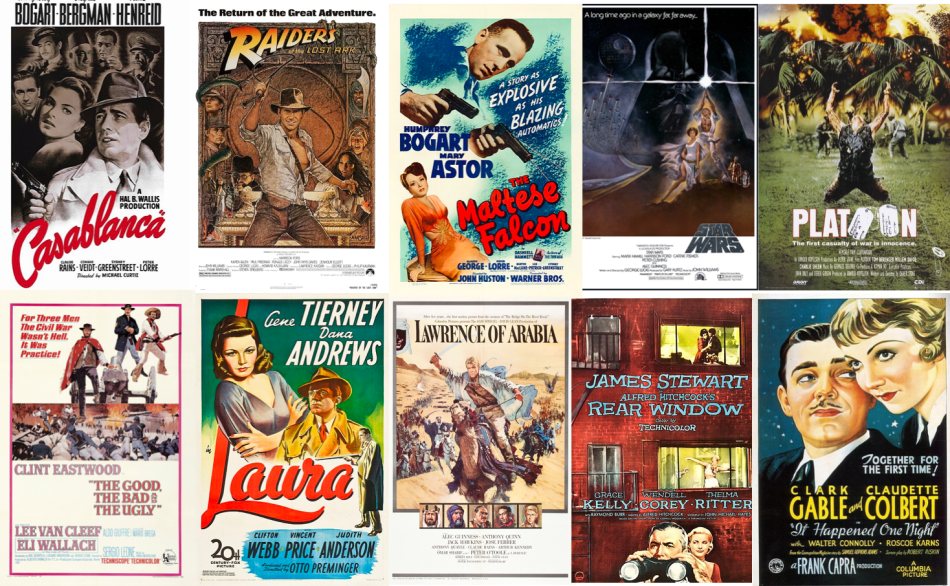
Excellent selection. Though by your taste I’m surprised The Third Man isn’t there also. Be interested to see a list of your favourite contemporary films also.
The Third Man would probably make my top 10 list of Film Noirs. Something to consider would definitely be a contemporary films list. Where to start Lol.
Die Hard. *Always* with Die Hard.
Until you mentioned it, it didn’t really register that there are no contemporary or 21st century films represented here. Eternal Sunshine of the Spotless Mind (2004) came close as did The Lord of The Rings: The Return of the King (2003).
Two of my favourite movies, right there. Though there’s always been something about Fellowship that I preferred to Return.
Eternal Sunshine I watch with every girlfriend I’ve had since it was released! Being John Malkovich also a classic.
Love your list. There’s some cinema I’ve got to watch again! Interesting that they are all mainstream US offerings. Don’t get me wrong- I love them all, but it’s interesting that you don’t have any “art house” films there or foreign cinema. I haven’t watched a lot of Arthouse or much of a variety of foreign film so I couldn’t really point anything out as missing but there is that assumption that art house film is important and it’s style or subjects eventually infiltrate and transform mainstream cinema.
It’s nearly impossible to choose just ten films. I did consider arthouse and or foreign films such as 8 1/2, Breathless, The Leopard and Life is Beautiful which I rate very highly. Toyko Story speaks for itself but I found it cliche to vote for it just because everyone else does. Pulp Fiction missed out by the skin of its teeth. Is that Art House? I’m also lamenting others that just missed the cut including Eternal Sunshine of the Spotness Mind.
I agree- impossibly difficult to narrow down to just 10. Early Tarantino I think was Arthouse or trying to be, but he took it to the mainstream with Pulp Fiction. I think Star Wars was considered fringe because it was sy-fi until it was released. I’ll be looking out for your not so mainstream suggestions.
I guess I’ve seen everything except for Laura. I’ve have to keep that in mind. Everything else is great.
Great selection of films Robert. I would definitely place “Lawrence of Arabia”, “Rear Window” (two of my top 3 all-time favorite films, along with “The Wizard of Oz”), and “Casablanca” in my top 10.
The Good, The Bad, and The Ugly was so epic. From the cinematography to the music. This is definitely a favorite movie of mine too. I won’t argue with the Star Wars choice either! I like your top 10… I still think the Godfather should be in the conversation! Great selection nonetheless.
I honestly can’t say I agree with any (prefer many foreign films) nor do I regard Sight & Sound as this golden standard of objectivity, taste and criticism anymore, but have you read Vera Caspary’s Laura? If not, I strongly recommend. I think a part (even small) of the film’s success is surely due to the original source material? In my personal opinion, it is better and more nuanced than the film. I have wanted to do a review of it for years now. I will probably do so this year.